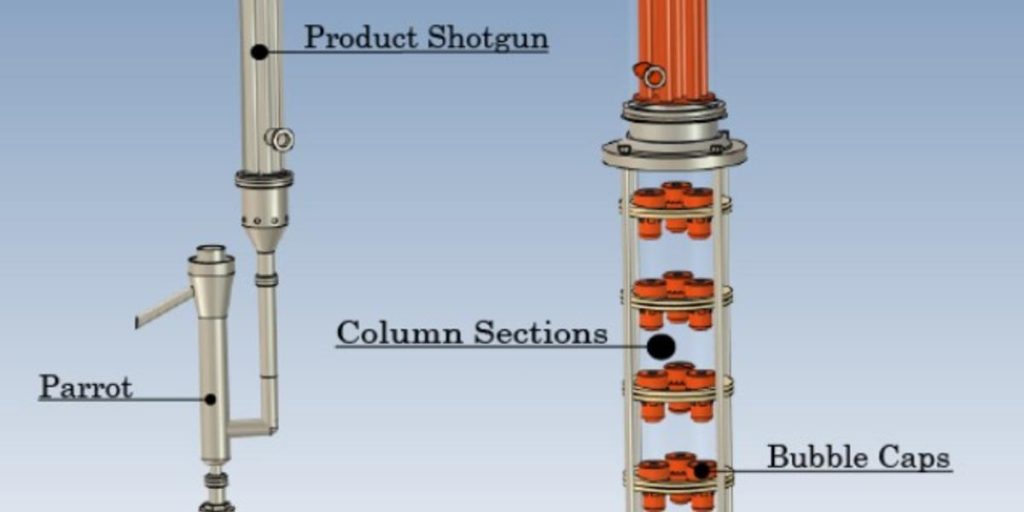How a Distillation Column Works

Column Distillation 101
The only real “moving” distillation column parts are the agitator, wash/beer, and the vapor, and boy does that vapor move! Column distillation is really just phase change over and over again on the plates until the contents reach your product condenser, where they are turned into a liquid for good — to be consumed as a craft spirit. While it seems like a pretty easy concept, knowing and understanding why each part is in it’ specific place is important to a good run.
You start the process with your fermentation (a process for another time) becoming your wash, beer, or kettle charge in your pot, keg, or kettle. Once you are ready to turn it into ethyl alcohol, you’ll turn up the heat, and if equipped get the agitator going to more evenly distribute the heat, until it emits a vapor traveling up the column. At this point, StillDragon prefers to use the plates and bubble caps system due to its wide and forgiving operating range.
So, the vapor travels up and along the path of least resistance through the bubble caps on each plate. If you’re early in your run, there will be little to no liquid on each plate, and the vapor will continue the upward movement until it hits something cooler and condensates, where it will create a liquid bed on each plate. And just like that you’ve completed one distillation cycle.
The vapor is going to continue this pattern multiple times for as many plates as you have in your column. The fun, scientific part (as if it wasn’t already fun science) is when the liquid beds form, the vapor traveling through the bubble caps dissipates into each liquid bed, causing the liquid to reheat (because the vapor is hotter than the liquid) and each plate to start to boil, thus creating more vapor on the up and up.
You’ll also notice the plates contain caps that look more like cups. These allow liquid to overflow into them, draining back to the plates below to vaporize at a later point. This also ensures that the plates don’t flood and the vapor properly heats your liquid bed.
Every time the vapor condenses and then turns back into vapor, phase change has occurred and completed a distillation cycle. This also happens at the top of the plated column, in what we call the dephlegmator (de-fleg-may-ter). Now, this gem of a contraption is a tube in the shell condenser, with through pipes that are large enough to allow two-way movement. So, at some point in your run, you will have vapor continuing the upwards movement, while some of the vapor gets knocked down onto the plate below.
The vapor that passes through the condenser travels toward the end of the road, or the shotgun condenser. This is another tube in the shell condenser, but this one has much smaller through pipes to create more surface space for the vapor to be knocked down.
The vapor is now in its final liquid state, and will be pouring out of the parrot. Don’t forget to stick your alcometer in there to see what ABV you’ve created!
And that’s the basic, beginners version of column distillation. It is recurring phase change, assisted by distillation column parts like copper plates and bubble caps, until it hits a cooling condenser, where it turns into the final liquid state, also known to the young kids these days as “liquid courage”. (In other words, those liquor labels that say “7x distilled” may have been created on a 7-plate column.)
If you’re looking for a more in-depth understanding of column distillation, check out the StillDragon community forum. It is full of questions and answers provided by distillers from the early stages to the more seasoned.